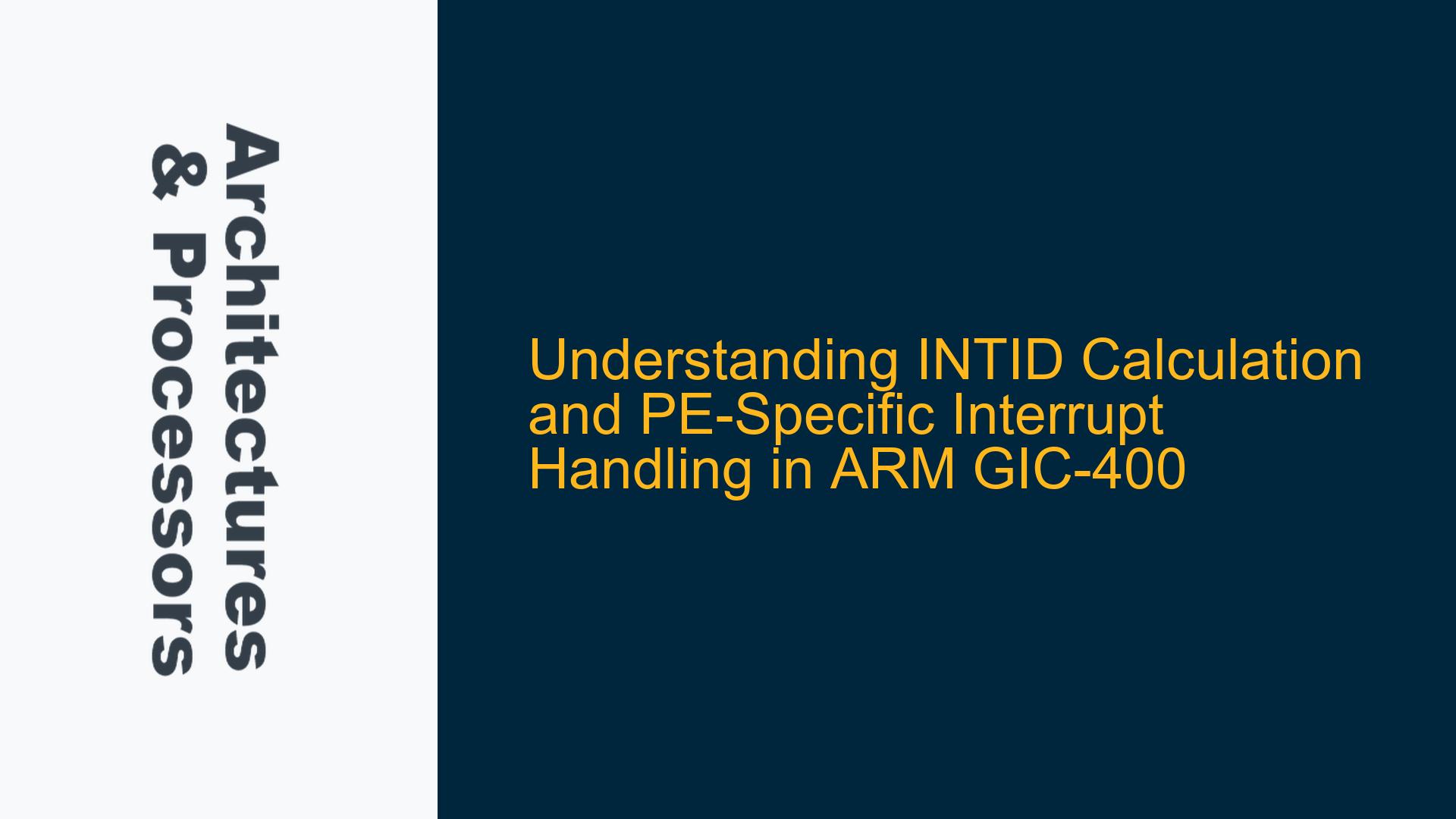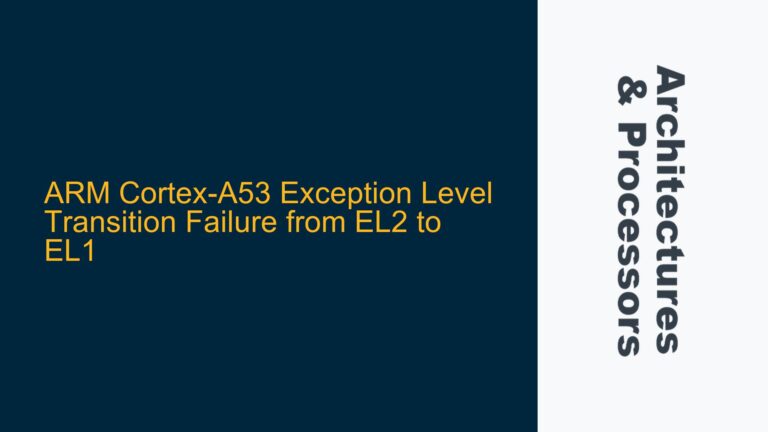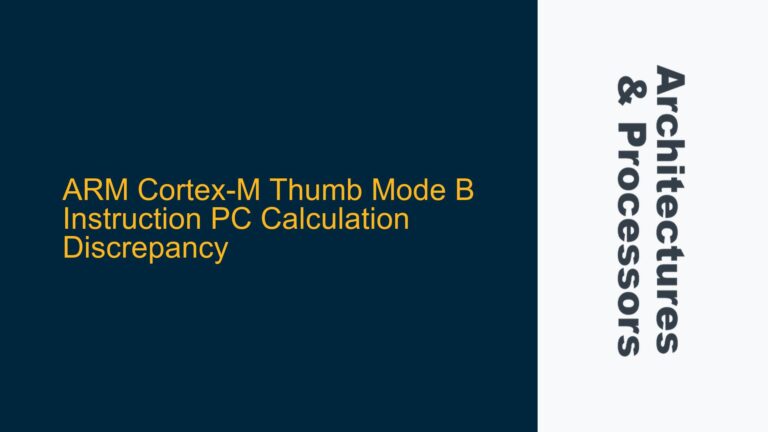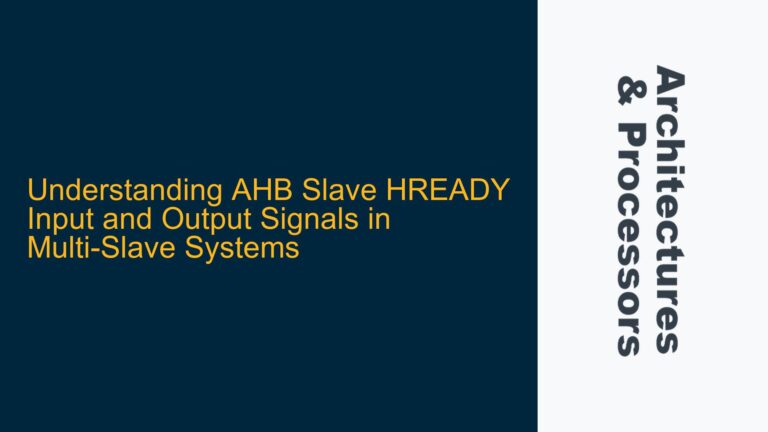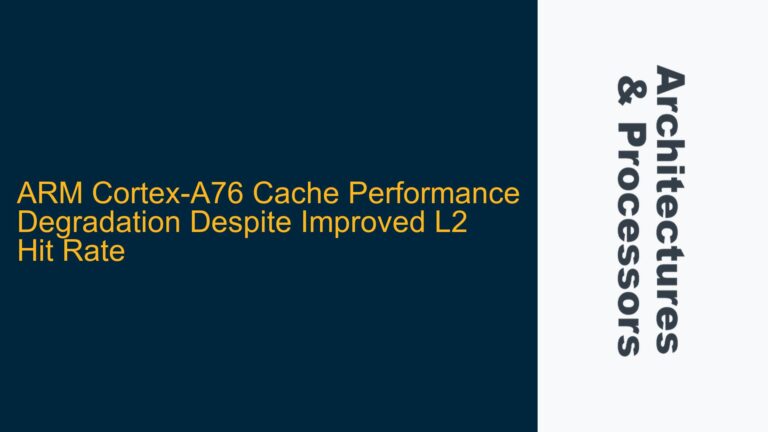INTID Allocation and PE-Specific Interrupt Handling in ARM GIC-400
The ARM Generic Interrupt Controller (GIC) is a critical component in ARM-based systems, responsible for managing and prioritizing interrupts across multiple Processing Elements (PEs). The GIC-400, a specific implementation of the GIC architecture, provides a robust framework for handling interrupts, including Software Generated Interrupts (SGIs), Private Peripheral Interrupts (PPIs), and Shared Peripheral Interrupts (SPIs). A key aspect of the GIC-400’s functionality is the calculation and assignment of Interrupt IDs (INTIDs), which uniquely identify each interrupt type and source. Understanding how INTIDs are allocated and whether they can be handled independently for each PE is essential for designing efficient and scalable interrupt-driven systems.
In the GIC-400 architecture, INTIDs are divided into distinct ranges for SGIs, PPIs, and SPIs. SGIs are assigned INTIDs 0-15, PPIs are assigned INTIDs 16-31, and SPIs are assigned INTIDs 32-1019. Each PE in a multi-core system has its own set of SGIs and PPIs, while SPIs are shared across all PEs. This raises important questions about how INTIDs are managed for each PE and whether the GIC-400 can handle PE-specific interrupt control. Specifically, can each PE have its own independent range of SGI and PPI INTIDs, and can PPIs be triggered independently for specific PEs? These questions are critical for system designers who need to ensure that interrupts are handled efficiently and without contention in multi-core environments.
The GIC-400’s ability to handle PE-specific interrupts is a key feature that enables fine-grained control over interrupt handling. For example, in a system with eight PEs (cores or threads), each PE can have its own set of SGI and PPI INTIDs, allowing for independent interrupt generation and handling. This capability is particularly important in real-time systems, where timely and deterministic interrupt handling is required. However, the implementation details of INTID allocation and PE-specific interrupt handling can be complex, requiring a deep understanding of the GIC-400 architecture and its configuration options.
INTID Ranges and PE-Specific Interrupt Allocation
The GIC-400 architecture defines specific INTID ranges for SGIs, PPIs, and SPIs, with each range serving a distinct purpose. SGIs, which are software-generated interrupts, are assigned INTIDs 0-15. These interrupts are typically used for inter-processor communication and can be generated by writing to the GIC’s Software Generated Interrupt Register (GICD_SGIR). Each PE has its own set of SGI INTIDs, meaning that SGI INTID 0 on PE 0 is distinct from SGI INTID 0 on PE 1. This allows each PE to generate and handle its own SGIs without interfering with other PEs.
PPIs, which are private peripheral interrupts, are assigned INTIDs 16-31. These interrupts are specific to each PE and are typically used for peripherals that are directly connected to a particular PE, such as timers or performance counters. Like SGIs, each PE has its own set of PPI INTIDs, allowing for independent interrupt handling. For example, PPI INTID 16 on PE 0 is distinct from PPI INTID 16 on PE 1, enabling each PE to handle its own PPIs without contention.
SPIs, which are shared peripheral interrupts, are assigned INTIDs 32-1019. These interrupts are shared across all PEs and are typically used for peripherals that are connected to the system bus, such as network interfaces or storage controllers. Unlike SGIs and PPIs, SPIs are not specific to a particular PE and can be handled by any PE in the system. The GIC-400 provides mechanisms for routing SPIs to specific PEs based on priority and affinity settings, ensuring that interrupts are handled efficiently and without contention.
The allocation of INTIDs for SGIs and PPIs on a per-PE basis is a key feature of the GIC-400 architecture. This allows each PE to have its own independent set of interrupts, enabling fine-grained control over interrupt handling in multi-core systems. For example, in a system with eight PEs, each PE can have its own set of SGI and PPI INTIDs, allowing for independent interrupt generation and handling. This capability is particularly important in real-time systems, where timely and deterministic interrupt handling is required.
GIC-400 Configuration for PE-Specific Interrupt Handling
The GIC-400 provides several configuration options for managing PE-specific interrupts, including the ability to route interrupts to specific PEs and to configure interrupt priorities. These configuration options are critical for ensuring that interrupts are handled efficiently and without contention in multi-core systems.
One of the key configuration options in the GIC-400 is the ability to route SPIs to specific PEs. This is done using the GIC’s Interrupt Routing Registers (GICD_IROUTER), which allow system designers to specify the target PE for each SPI. By routing SPIs to specific PEs, system designers can ensure that interrupts are handled by the most appropriate PE, reducing contention and improving system performance. For example, in a system with eight PEs, network interface interrupts could be routed to PE 0, while storage controller interrupts could be routed to PE 1. This ensures that each PE is responsible for handling a specific set of interrupts, reducing the likelihood of contention and improving system performance.
Another important configuration option in the GIC-400 is the ability to configure interrupt priorities. The GIC-400 allows system designers to assign a priority level to each interrupt, with lower priority values indicating higher priority interrupts. This allows system designers to ensure that critical interrupts are handled before less critical interrupts, improving system responsiveness and determinism. For example, in a real-time system, high-priority interrupts such as those generated by a real-time clock could be assigned a higher priority than lower-priority interrupts such as those generated by a network interface. This ensures that critical interrupts are handled in a timely manner, improving system performance and determinism.
The GIC-400 also provides mechanisms for managing interrupt affinity, which determines which PE is responsible for handling a particular interrupt. By configuring interrupt affinity, system designers can ensure that interrupts are handled by the most appropriate PE, reducing contention and improving system performance. For example, in a system with eight PEs, interrupts generated by a particular peripheral could be configured to be handled by the PE that is closest to the peripheral, reducing latency and improving system performance.
Troubleshooting PE-Specific Interrupt Handling in GIC-400
When working with the GIC-400, it is important to ensure that interrupts are handled correctly and efficiently. This requires a thorough understanding of the GIC-400 architecture and its configuration options, as well as the ability to troubleshoot and resolve issues related to interrupt handling.
One common issue that can arise when working with the GIC-400 is incorrect interrupt routing. This can occur when SPIs are not routed to the correct PE, leading to contention and reduced system performance. To troubleshoot this issue, system designers should first verify that the GICD_IROUTER registers are configured correctly, ensuring that each SPI is routed to the appropriate PE. If the GICD_IROUTER registers are configured correctly, system designers should then verify that the interrupt affinity settings are correct, ensuring that each interrupt is handled by the most appropriate PE.
Another common issue that can arise when working with the GIC-400 is incorrect interrupt priority settings. This can occur when interrupts are not assigned the correct priority level, leading to reduced system responsiveness and determinism. To troubleshoot this issue, system designers should first verify that the GIC’s priority registers are configured correctly, ensuring that each interrupt is assigned the appropriate priority level. If the priority registers are configured correctly, system designers should then verify that the interrupt handling code is correctly prioritizing interrupts, ensuring that critical interrupts are handled before less critical interrupts.
A third common issue that can arise when working with the GIC-400 is incorrect interrupt handling code. This can occur when the interrupt handling code does not correctly acknowledge or clear interrupts, leading to interrupt storms and reduced system performance. To troubleshoot this issue, system designers should first verify that the interrupt handling code correctly acknowledges and clears interrupts, ensuring that interrupts are not left pending. If the interrupt handling code is correct, system designers should then verify that the GIC’s interrupt status registers are correctly updated, ensuring that interrupts are not being missed or incorrectly handled.
In conclusion, the GIC-400 provides a robust framework for managing interrupts in ARM-based systems, with specific INTID ranges for SGIs, PPIs, and SPIs. Each PE in a multi-core system has its own set of SGI and PPI INTIDs, allowing for independent interrupt generation and handling. The GIC-400 also provides several configuration options for managing PE-specific interrupts, including the ability to route interrupts to specific PEs and to configure interrupt priorities. By understanding the GIC-400 architecture and its configuration options, system designers can ensure that interrupts are handled efficiently and without contention in multi-core systems. When issues arise, system designers should follow a systematic troubleshooting approach, verifying interrupt routing, priority settings, and interrupt handling code to ensure that interrupts are handled correctly and efficiently.
